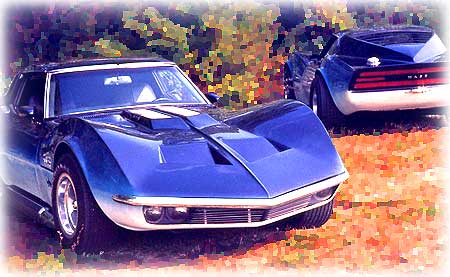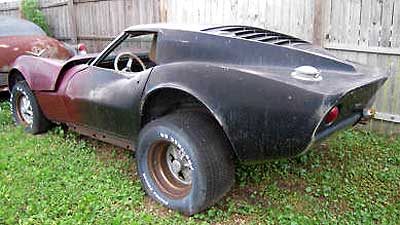Dateline: 1.21.1
So, you want to build yourself a Maco Corvette? Get your work clothes!
 We were very pleased with the response to our Mako Shark Attack Week from the beginning of January 2012. I first saw the Mako Shark-II back in ‘66 and thought it was the most stunning car I’d ever seen. It looked like what I had imagined “cars from the future” would look like. Obviously, I wasn’t the only one that was touched, moved, and inspired.
We were very pleased with the response to our Mako Shark Attack Week from the beginning of January 2012. I first saw the Mako Shark-II back in ‘66 and thought it was the most stunning car I’d ever seen. It looked like what I had imagined “cars from the future” would look like. Obviously, I wasn’t the only one that was touched, moved, and inspired.
The Cliff Notes version of the Mako Shark-II story is this. Chevrolet blows minds with the non-running Mako Shark-II at the New York World’s Fair in 1965. The crowds went wild and told Chevrolet, “We want one!” And Chevrolet said, “We’ll get right on it!” The running Mako Shark-II with it’s big 427 big-block engine was just “out’a sight!” But when the Mako Shark-II-inspired ‘68 Corvette came out, some said, “What’s that? That’s not a Mako Shark!” One guy took it upon himself to build his own Mako Shark-II body for the new Corvette. John Silva’s “Maco Shark” Corvette body kit filled the void that Chevrolet created. Silva’s Maco kit got the attention of Motion Performance’s Joel Rosen, who had recently unleashed his Phase III GT Corvette, and was looking for something even more exotic to offer his Motion customers. Rosen and Silva made a deal and the rest is history. Motion and Silva made a few turnkey Maco Sharks and sold LOTS of body kits and parts.

The kit car industry has come a long way since the ‘60s when Meyers-Manx, Fiberfab, Silva, Motion, and others were selling kits. The nature of kits cars is that most are never completed, with electrical issues usually being the number one issue. What it comes down to is that for a kit car to turn out great, you need excellent craftsmen and a fair amount of cash. A fully-functional kit car can be as complicated as a manufactured car. Continue reading “1974 Maco Shark Corvette Build Project”
